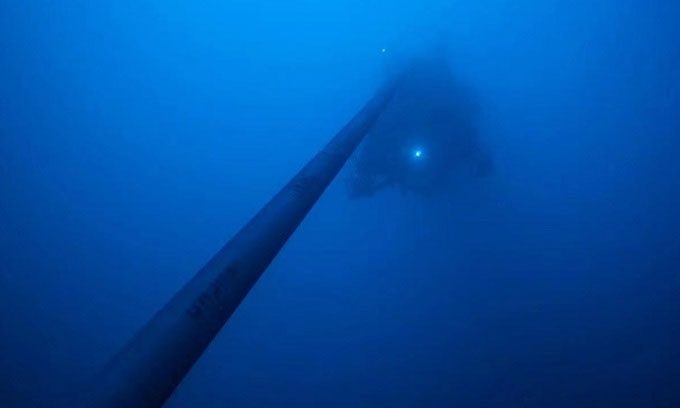China Completes Installation of 115.5 km Deepwater Pipeline for Oil and Gas Transportation.
The newly installed pipeline is a crucial part of Phase II of the first independently developed ultra-deepwater energy station project in China, named Shenhai-1, which began operations in June 2021, according to CGTN.

The pipeline is located at a depth of 1,000 m underwater. (Photo: CNOOC)
Phase II of the project began construction in November of last year, located 130 km from the city of Sanya on Hainan Island, southern China, between the Yacheng 13-1 gas field and the Shenhai-1 energy station. The maximum operating depth in the area is nearly 1,000 m. Upon completion, Phase II is expected to increase the annual production capacity of Shenhai-1 from 3 billion m3 to 4.5 billion m3.
To develop Phase II efficiently and cost-effectively, China National Offshore Oil Corporation (CNOOC) is pioneering the application of a new model. This model includes an underwater production system, shallow-water platform processing facilities, and a remote control system for deepwater semi-submersible drilling rigs, according to Wu Hualin, Deputy Director in charge of cables and pipelines for the Shenhai-1 Phase II project at CNOOC’s Hainan branch.
The underwater pipeline serves as a “lifeline” that ensures smooth offshore transportation of oil and gas. Phase II focuses on China’s first deepwater high-pressure gas field. The oil and gas extracted from the field have complex compositions and are subjected to high temperatures and pressures. Conventional pipelines cannot meet the production requirements.
Therefore, CNOOC has employed a combination of 114 km of large-diameter seamless steel pipes and 1.5 km of bi-metal composite pipes in deepwater environments to transport oil and gas.





















































